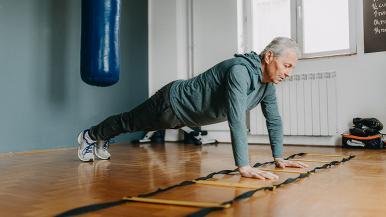Lymphedema is the swelling, often of the arm or leg, commonly caused by cancer treatment or lymph node removal. Often uncomfortable or painful, it happens when lymph fluid accumulates in the tissue.
What is lymph fluid?
Lymph is fluid made of white blood cells, including the ones that attack bacteria in the blood. The lymphatic system is like a plumbing system that carries the lymph throughout the body. When the lymph is not able to flow through the body because of lymph node dissection, radiotherapy cancer treatment or some other reason, swelling occurs, and wastes and toxins begin to build up.
If untreated, this can result in an infection and cause delays in wound healing. A long-term accumulation of this fluid eventually results in thick and hardened tissues, called fibrosis. Lymphedema can occur at any time following cancer treatment.
How exercise helps
Exercise helps reduce the risk of lymphedema and flare-ups. Exercise makes the muscles contract and release against the skin. When you exercise, your muscles pump and push lymph fluid where it needs to go. Consistent exercise helps the lymph move through your body.
The most effective lymphatic exercises are ones that work with the connective tissue and fascia of the body. Dynamic movements help move the lymph into the bloodstream to get cleansed and redirected in the body.
If you are dealing with lymphedema, Waterford Place offers Lymphedema-Focused Movement, a weekly class that addresses cancer-related lymphedema through gentle movement and stretches. For more information or to register, call (331) 301-5280.




